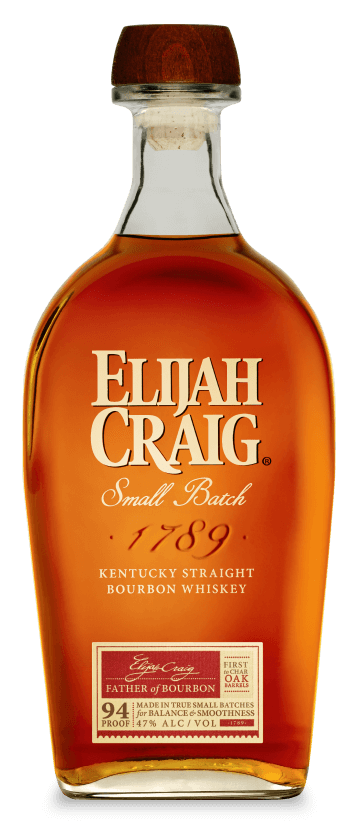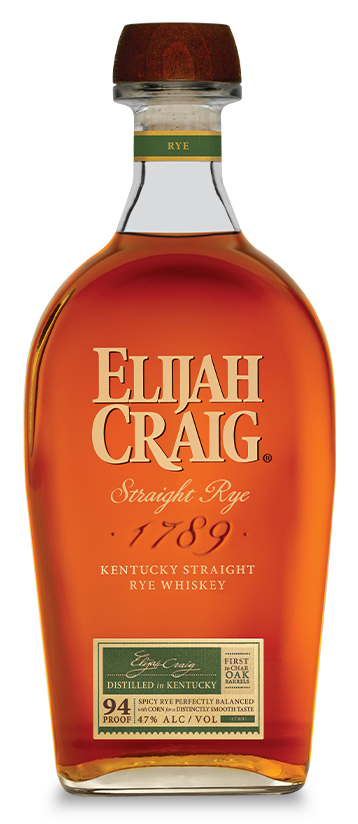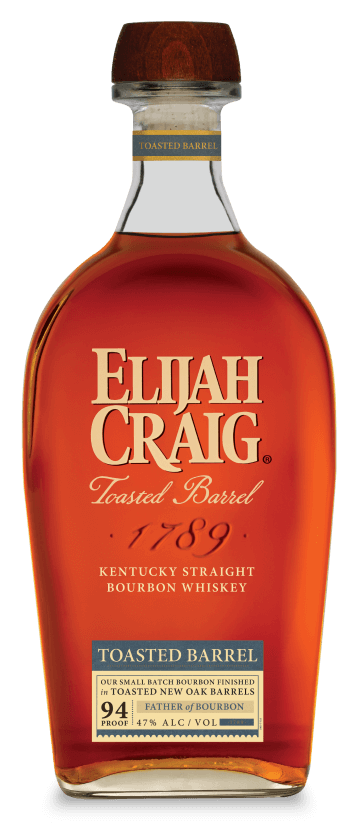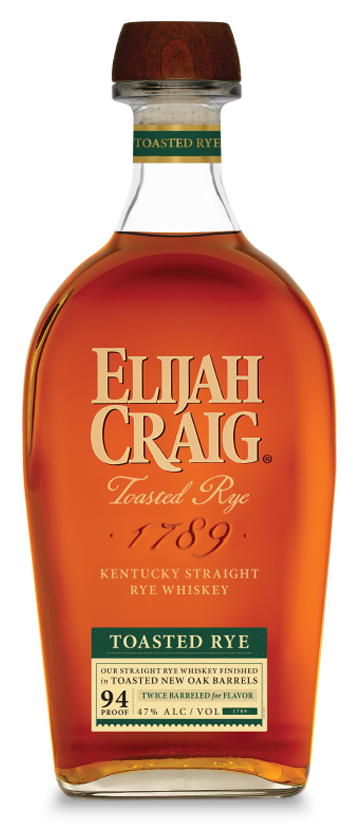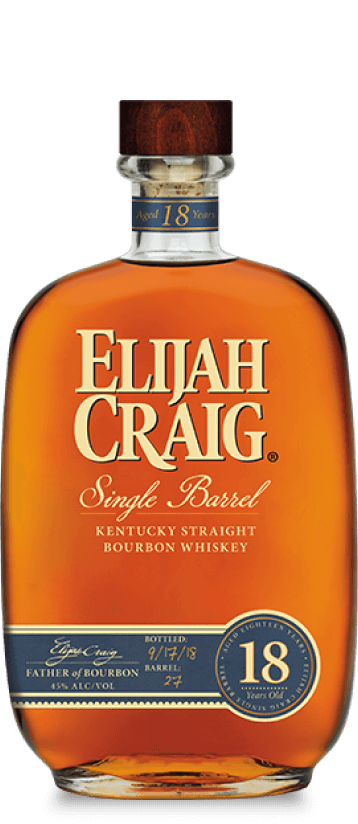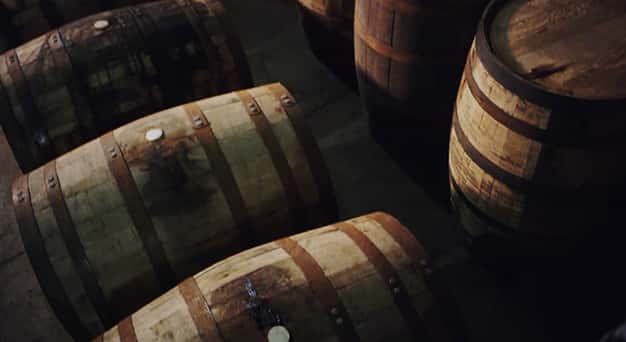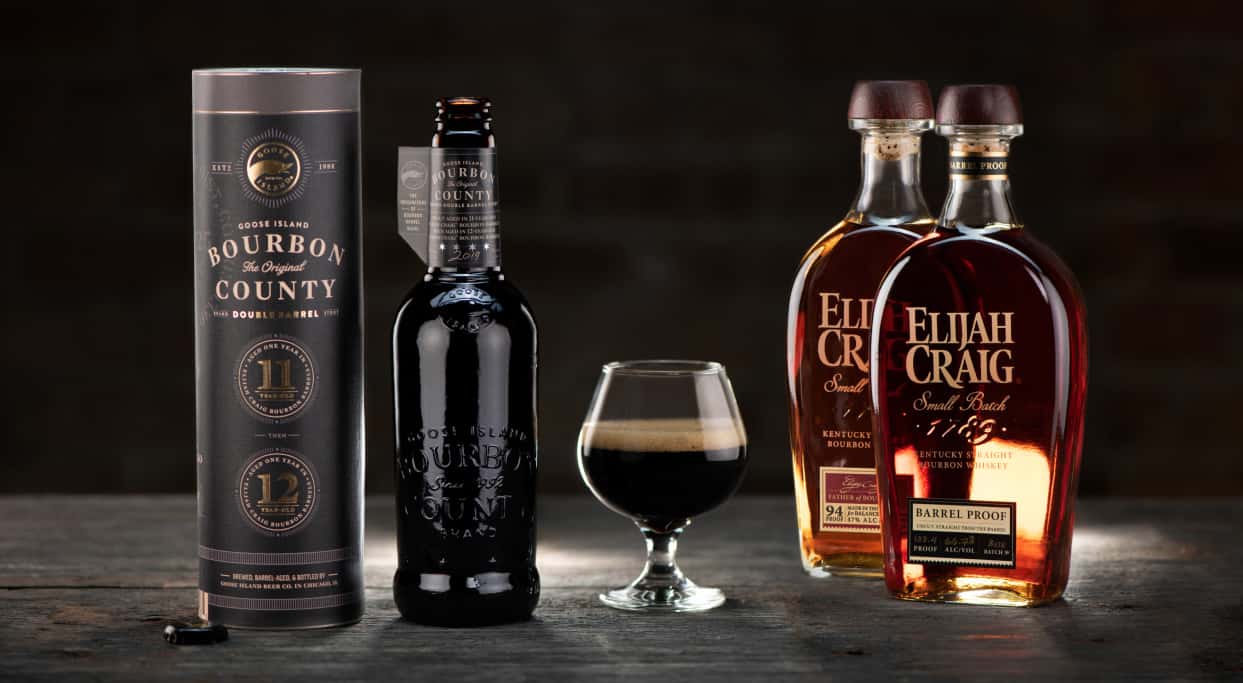HOW SIMPLE STRUCTURES PRODUCE COMPLEX FLAVORS
2019
High-quality charred oak barrels are essential to developing Elijah Craig's signature flavor. But where and how those barrels are stored are an essential part of the story. Discover the Greatness Within our open-air rickhouses.
Aging our Bourbon in Level 3 charred oak barrels is the first step to developing Elijah Craig’s signature flavor; but equally important is where those barrels are stored. For centuries, American distillers have aged whiskey in warehouses with styles ranging from converted barns to ornate, custom-built brick buildings. Today, we age our Bourbon in what are known as traditional open-air rickhouses.
These modest wood-frame structures, usually seven stories tall, have corrugated metal sides and roofs. Each floor is filled with wooden ricks, in which barrels are stacked three-high and stored throughout the aging process. The design allows the air to circulate around the barrels, which means they never need to be moved or rotated during their time in the rickhouse. According to Donald Blincoe, whose firm, Buzick Construction, Co., has been building rickhouses since 1937, very little about these buildings has changed over the past century for one main reason: the design works.
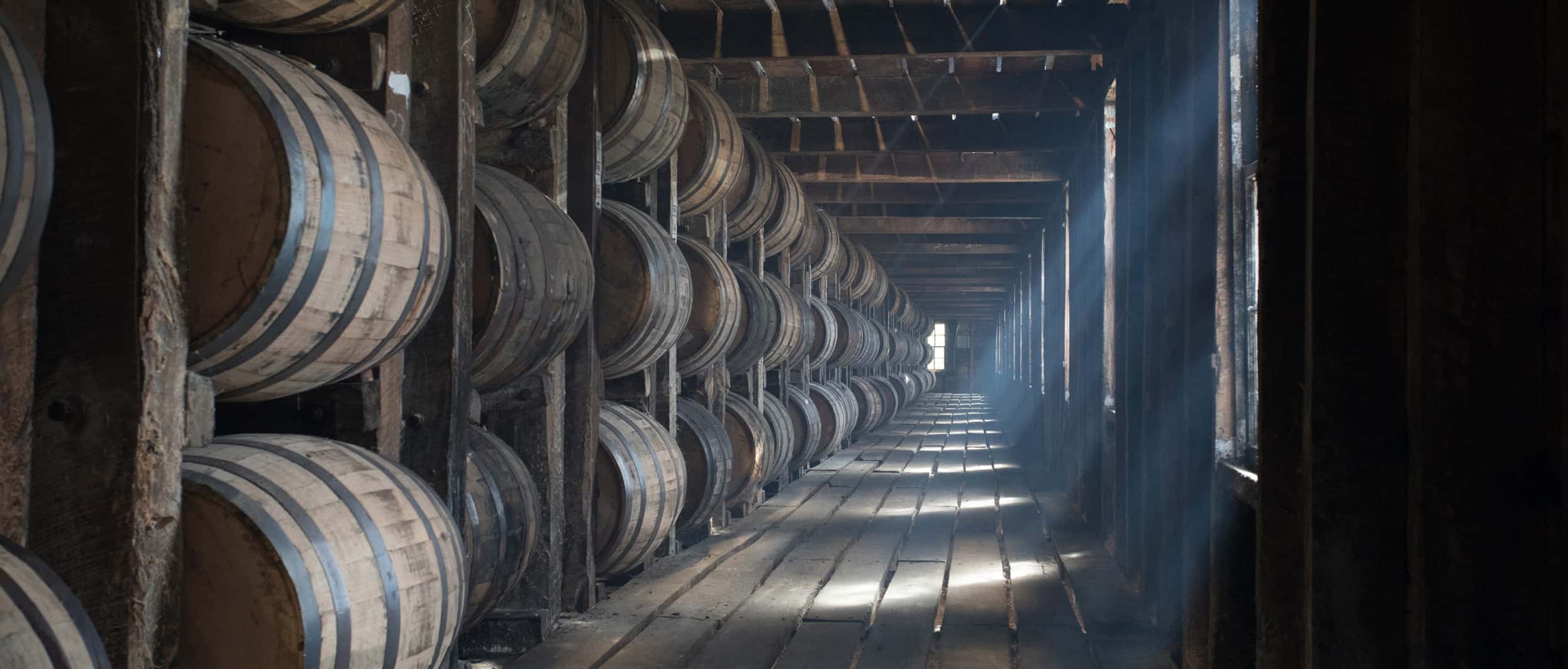
Apart from being simple to build, these storage spaces serve unheralded roles in the development of Elijah Craig. With only a thin sheet of metal separating them from Kentucky’s climate, our barrels experience drastic swings in temperature—which ultimately improves the flavor of the Bourbon they hold. Our rickhouses are not climate-controlled or insulated in any way; nature alone dictates how hot or cold the temperatures are inside. Temperatures can swing from below 0° F in winter to more than 100° F in just nine months.
Barrels stored on the highest floors endure the summer’s worst heat, which leads to more water evaporation and results in Bourbon with higher proofs. On the lowest floors, where temperatures are much cooler, the reverse happens: barrels often lose more alcohol than water, and proofs drop. The moderate temperatures of the middle floors form a sweet spot where maturation is most balanced.
“Out in the country, with the sun and wind constantly beating on those buildings, you get faster maturation, producing bigger and more diversity of flavor,” explains our Master Distiller, Connor O’Driscoll. That high heat and deep cold is beneficial for whiskeys like Elijah Craig Rye, because, “new make rye is incredibly big and strong to the point that it needs some character hammered into it. Weather does that.”
Not only does each unique building produce varied whiskey characteristics; their position in the landscape will also impact how the liquids age within. Factors like building location (e.g. on top of a hill or at the bottom), direct sunlight exposure, and how they’re positioned against prevailing winds all affect the maturation process. These variations can actually help us achieve greater consistency from batch to batch, by giving us a wider selection of barrels to choose from when mingling our whiskeys.
While the rickhouse’s basic structure has remained the same, there is always room for innovation—especially when it comes to Elijah Craig. Thanks to new technology (and the American Whiskey boom) engineers like Buzick have grown rickhouse capacity from 18–22,000 barrels to upwards of 55,000 units. That’s a combined 27.5 million pounds of whiskey per rickhouse!
“We now design building structures knowing where certain woods can and can’t go for the best long-term use,” Blincoe says. “We use a variety of wood species knowing which is best for which member of the building.”
In addition to increased capacity, the new designs also include upwards of 400 windows, catwalks beside each rick that are wider, and also wider walkways between the ricks. These improvements allow cooler ground-level air to be drawn into and through the bottom floors of the building, before being pulled upward through higher levels and exiting at the top. Roof vents assist the convection process, strengthening the vertical stream of warmer air.
“By leveraging multiple rickhouses of multiple types, you have the ability to make many unique expressions,” O’Driscoll says. “When it comes time to bottle Elijah Craig, it’s all about barrel selection — going through every part of the rickhouse and finding the exact flavors we’re looking for to contribute balance and consistency to each batch. That’s how we’re able to produce the signature spice, warm oak, and subtle smoke flavors beloved in Elijah Craig.”
In the end, every one of our rickhouses offers a different aging story, whose barrels can then be mingled to produce the exact balance we’re looking for. It’s how we craft our award-winning Elijah Craig Small Batch and Barrel Proof Bourbons, innovate with new expressions like Straight Rye, and achieve the same quality and consistency you’ve come to expect from Elijah Craig Bourbon year-over-year.
Who knew a simple building could produce such nuanced results? We did. Here’s to the open-air rickhouse—and to the Greatness Within.



